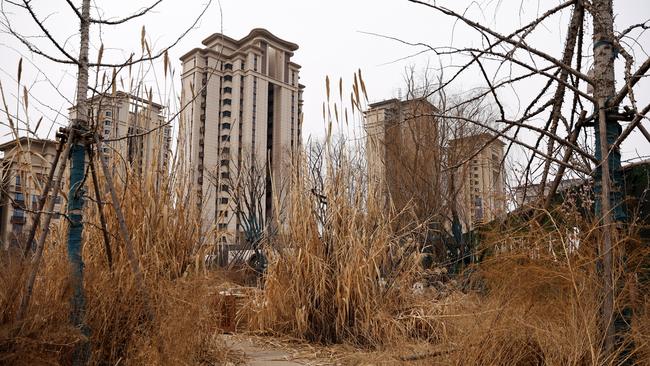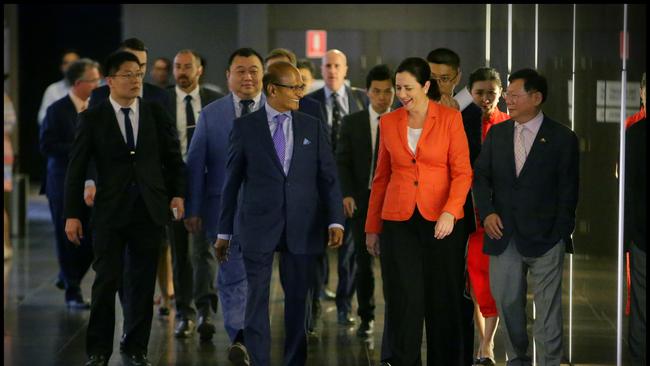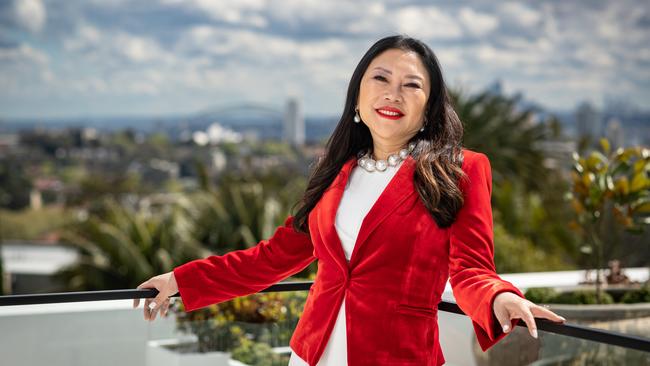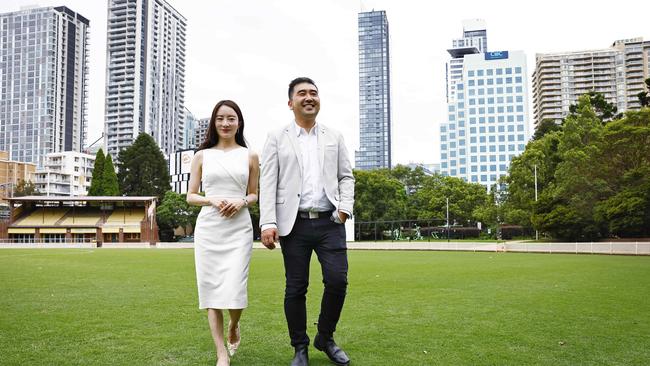How China’s property crisis has hit Australia’s real estate market
Only a few years ago, there was a fortune to be made selling Australian apartments to aspirational buyers in China. Not any more. A property ‘landslide’ is underway here as they desperately try to pull their money out.

Only a few years ago, there was a fortune to be made selling one or two-bedroom off-the-plan Australian apartments to aspirational buyers in China. Not any more.
Mike Zhang, a Gold Coast-based agent who specialises in trading real estate for clients in China, says right now many are desperate to offload their slices of Queensland.
A property “landslide” is under way, he tells Inquirer, as distressed Chinese sellers are frantically trying to return money to China to rescue struggling businesses.
“As long as China’s economy has not recovered, the sell-off will continue,” he says.
But at the higher end of Australia’s property market, the reverse is happening. Many wealthy Chinese with Australian permanent residency are getting money out of China as it is roiled by the biggest property crisis since the country allowed private ownership of real estate three decades ago.
They are looking to Australia as a safe destination for their wealth, often starting with a property in the $15m-plus segment.
China’s property crisis first hit Australia years ago. Billions of dollars of apartment projects were sold or abandoned as property giants such as Greenland, Wanda, Country Garden and Poly were forced to curtail their expansion into Australia and other promising international markets as their debt-heavy Chinese operations became mired in China’s sinking market.
Bad balance sheets in China ended a host of ambitious Australian projects. By 2022, for example, the Guangzhou-based giant R&F Properties had abandoned its plan to build 10,000 apartments in Springfield, south of Brisbane.

Five years after the announcement of that audacious $6bn project – which was to plonk 20-odd new apartment towers next to the Greg Norman-designed Brookwater Golf Course – it had fallen in a heap.
Only five years ago, Chinese property developers seemed set to be a growing presence in Australian CBDs. Now no one in the Australian property sector talks about them as the answer to the country’s housing shortage.
Many individual Chinese investors in Australian apartments also have had a rotten time in recent years.
Australia’s interest rate hikes, rising state taxes on overseas owners of Australian property, China’s tight capital restrictions and the woeful state of much of the Chinese economy have transformed many members of the country’s aspirational middle class into distressed sellers.
Peter Li, managing director of Plus Agency, says in the pre-pandemic years his Sydney-based firm kept “buying, buying, buying” for their Chinese clients.
“We still service a lot of our Chinese clients,” he tells Inquirer. “Now we help them with selling, selling, selling.”
Luxe demand remains strong
For all the gloomy headlines, far from everyone is suffering in China. Many of China’s wealthiest citizens remain in the hunt for a trophy home in Sydney, Melbourne or Brisbane.
Many are clients of Monika Tu, of the Chinese-focused agency Black Diamondz Property Concierge, who continues to sell some of Australia’s most expensive property, even as China’s property slump endures. When Inquirer spoke to her this week, the normally Sydney-based Tu was in China, meeting clients on a “roadshow”. Speaking after a client event in Shenzhen, the entrepreneurial hub of China’s south, she said interest in Australia remained strong.
Most of her clients hold Australian permanent residency or temporary residence visas and are navigating the path to permanency. Some are just waiting to tie up their jobs before their families relocate.
For many of China’s wealthiest, the country’s property crisis, Beijing’s harsh Covid restrictions and concern about its economic future have crystallised relocation plans.

“Australia is still the best place to live,” says Tu, who functions as something of an Australian ambassador to China’s richest citizens. Their arrival to Australia – and the arrival of a wad of their money – is often noted in the bold-named property columns that chronicle the sale of the country’s most expensive properties: places such as the Toorak mansion bought for nearly $30m by Chengzhou Xia, a businessman relocating from China.
Sales such as that explain why, for all of China’s domestic economic troubles, the country’s citizens sit comfortably on top of the table that Australia’s Foreign Investment Review Board releases every three months on approved real estate purchases.
In the most recently released report, investors from China and Hong Kong shelled out $700m on Australian residential property – more than half of the total in the foreign investment regulator’s tally. In some quarters since China’s more than three-year-long property crisis began, the amount of investment from China and Hong Kong has topped $1bn.
Some speculate that the amount is far higher, suspecting further money is finding its way into Australia through various, disguised corporate vehicles and investment trusts.
Who are Australia’s ‘Chinese’ buyers?
Chinese buyers have long been one of the most discussed parts of Australia’s property market.
But after a raft of FIRB restrictions and a sharp increase in state government taxes on foreign buyers, they are an endangered species. They are far less numerous than Chinese-Australian buyers – Australian citizens or permanent residents.
Foreigners without Australian permanent or temporary residency, Chinese or otherwise, are allowed to buy only new properties. One or two-bedroom apartments were the most popular Australian real estate choice for Chinese foreign buyers – with some, back in the boom times, sold to investors who had never even visited the country.
That era is long gone. Many lost money buying into projects in Brisbane and Melbourne, which contributed to a glut in both markets. Others worry about an asset class that has had such profound troubles in the Chinese market.
Now almost all sales are to owner-occupiers.
Plus Agency managing director Li outlines the three main types of buyers today. First, Chinese-Australians who came to the country as international students or migrated on a business visa. After doing well in their lives in Australia, many are now upgrading to bigger or more prestigious addresses.

The second group has more recently returned to Australia from China. They got their permanent residency in Australia years ago and returned to China to work back when its economy was booming. “But now as China’s economy goes down, they retreat back to Australia to live here permanently,” says Li.
It’s a cohort that continues to grow as China’s property troubles rage on.
The final group comprises the bold-type buyers from the luxury property columns who are paying premium prices for eastern suburbs Sydney trophy homes or blue-chip Melbourne mansions.
Many are on temporary visas as they wait for the approval of their “golden visas” – a controversial class that gave a path to residency for foreigners who invested $5m or more in approved sectors. Unlike permanent residents, those buyers on temporary resident visas end up in FIRB’s foreign investment tally.
The federal government has halted the “golden visa” class, although a couple of hundred applications lodged before that decision remain live and will likely be approved in the coming years. Its demise has the clutch of Australian real estate agencies that have catered to wealthy Chinese property buyers engaging in the diversification effort Canberra has urged on other exporters.
The early signs are promising. “The Southeast Asian market is booming. It’s like the other way around from the Chinese market,” says Li.


To join the conversation, please log in. Don't have an account? Register
Join the conversation, you are commenting as Logout